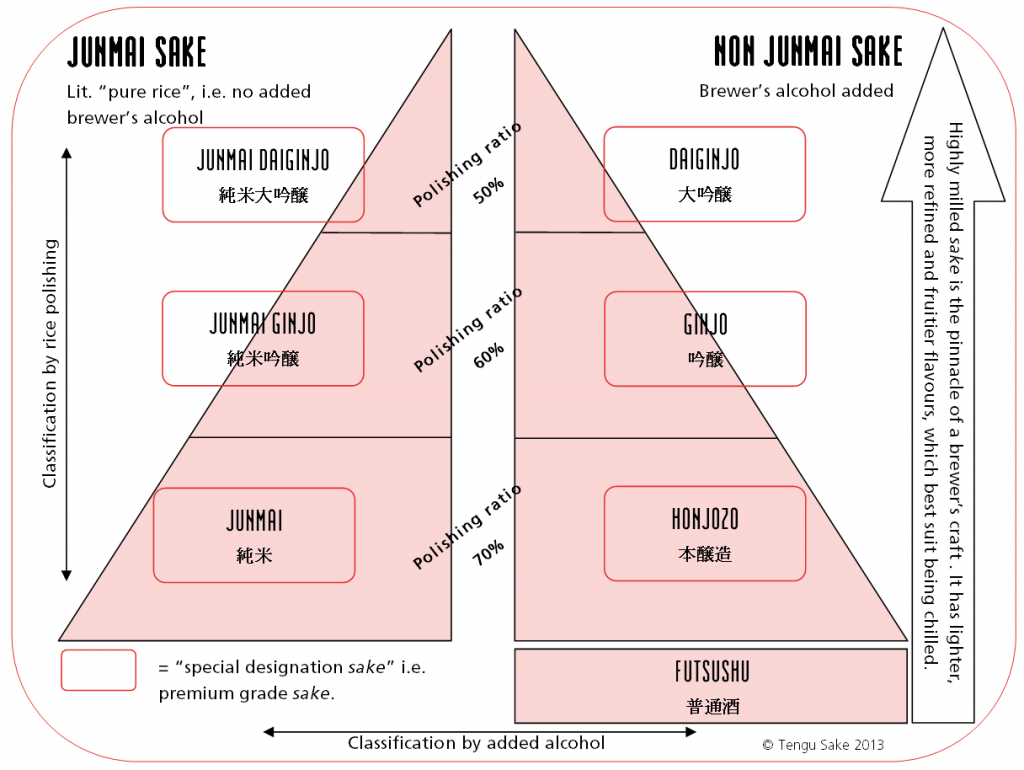Four Fox Saké
Four Fox Saké Junmai Daiginjo Brewed in Niigata, Japan, Naeba Brewery is one of the oldest family owned breweries. Using pure snowmelt water and highly milled sake rice, this sake is dry, rich, balanced and crisp. The sake bottle is made to attract attention.
In Japanese mythology, Inari Okami is the god of Rice, Saké, Swordsmiths and Foxes... The fox spirits of Inari were entrusted to guard the Torii gates, only allowing the purest of spirits to pass.
Four Fox Saké captures this ethos and represents this dedication to purity and perfection. True to its artisanal origins, Four Fox Saké utilises only the finest ingredients. Every grain of rice and koji are painstakingly milled to remove impurities and distilled utilising only water extracted from the snows of the Tsunan region (an area in Japan that boasts a greater annual snowfall than Oslo or Moscow). All of this handcrafted elegance has earned this Saké the title of Junmai Daiginjo, the highest grade of production available.
TASTING NOTES: Very clean, light and dry. It can be drank on its own in a wine glass or used to make cocktails. It is a modern take on a age-old classic.
Grade Junmai Daiginjo Rice Type Gohyaku mangoku Prefecture / Brewery Niigata / Naeba Shuzo Decanter Score 94 Awards Gold Medal SIP Awards 2 years in a row 90 Points at Ultimate Wine Challenge
https://fourfoxsake.com/home.html
Types of Saké
There is a lot of Japanese terminology surrounding the types of sake, which can be daunting for the uninitiated. Basic sake classification is surprisingly simple, especially when compared with the classification methods for wine, etc. Although Japanese sake can be classified by rice/yeast type and geographical provenance, the most overarching classifications are (1) how “polished” (milled) the rice grains used to make the sake are, and (2) whether a tiny amount of “brewers alcohol” (distilled alcohol) has been added to pronounce the sake’s characteristics (increase fragrance, flavour, etc.) The first classification results in the three types: daiginjo, ginjo and honjozo; for the second, the word junmai indicates that no alcohol has been added (incidentally, this does not increase the alcohol %). The diagram below explains the classifications further:

PREMIUM SAKE (TRIANGLE IN ABOVE DIAGRAM)
Premium sake (tokutei meishoushu) accounts for only a quarter of all the sake made in Japan, it regarded as the best of the best. There is a lot a variety within premium sake:
- The top classification is (junmai) daiginjo. Exceptionally refined taste; light, fruity and delicious cold.
- The second classification is (junmai) ginjo. Not as refined as daiginjo but still, generally, light, fruity and great cold.
- The third classification of premium sake is junmai and honjozo. Emphasis is on bringing out the flavours of the rice; great with food and can be drunk at a variety of temperatures.
NON PREMIUM SAKE (RECTANGLE IN ABOVE DIAGRAM)
Futsushu accounts for 75% of all the sake produced in Japan and is often overshadowed by its premium brothers and therefore overlooked in the West; however good futsushu is fabulous, reasonably priced and versatile.
OTHER TYPES OF SAKE
There are other styles of sake which require some explanation – nigori, sparkling aged & flavoured sakes, for example.